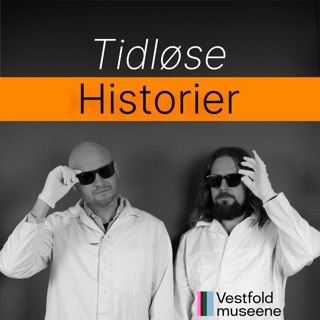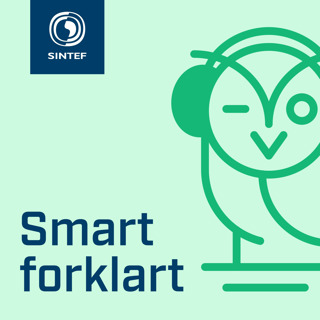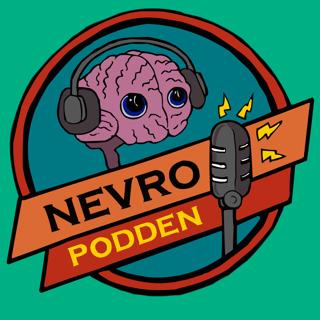
95: Cutting edge methods to utilize distributed acoustic sensing
In this episode, host Andrew Geary speaks with Ariel Lellouch and Tieyuan Zhu on distributed acoustic sensing (DAS), the featured special section in November's The Leading Edge. Ariel and Tieyuan highlight new developments in algorithms impacting microseismic, new findings for hydraulic fracturing, and discuss their disagreement for the current rate the geophysics industry is adopting and utilizing DAS. This is an exciting conversation on technology that has a wide range of applications for geophysics. Hear the latest in research in 20 minutes! Visit https://seg.org/podcast for the complete show notes and links to this month's special section on smart city geophysics. BIOGRAPHIES Ariel Lellouch is a research geoscientist and post-doc at Stanford Exploration Project. He is passionate about seismic wave propagation, and more importantly, what we can infer from these waves regarding subsurface properties. Currently, he's working on applications of DAS data to all sorts of geophysical problems: properties of guided waves, earthquake seismology, microseismic monitoring, and more. Tieyuan Zhu obtained a Bachelor's degree from China University of Geosciences (2005) and an M.S. degree from the Chinese Academy of Sciences (2008) and a Ph.D. degree in Geophysics from Stanford University (2014). His main research interests are in seismic attenuation, true-amplitude seismic imaging and inversion, time-reversal theory, and carbon dioxide monitoring. He is a recipient of a Jackson Distinguished Postdoctoral Fellowship (2014-2016) from the University of Texas at Austin. He is also a recipient of the award of Best Paper Presented by a student at the SEG 2013 and the J. Clarence Karcher Award from SEG 2018. CREDITS Original music by Zach Bridges. This episode was hosted, edited, and produced by Andrew Geary at 51 features, LLC. Thank you to the SEG podcast team: Ted Bakamjian, Jennifer Crockett, Ally McGinnis, and Mick Swiney.
12 Nov 202021min

94: The case to adjust quicker to machine learning for geophysics
In this episode, host Andrew Geary speaks with Mehdi Aharchaou on machine learning and AI, the featured special section in October's The Leading Edge. Mehdi shares his expertise in machine learning as we explore the potential and limitations of this cutting edge research. Mehdi highlights how these papers can improve the industry and why he views explainable AI and machine learning as the key to the future. He also explains why he believes the industry needs to do more to adopt and adjust to the digital revolution. This conversation covers important ground essential for all geophysicists and businesses - do not miss it! Visit https://seg.org/podcast for the complete show notes and links to this month's special section on smart city geophysics. BIOGRAPHY Mehdi Aharchaou is a research geophysicist at ExxonMobil. During his 7 years with the company, he has worked on various cutting-edge signal processing and inversion technologies, on topics such as deghosting, noise suppression, Q compensation, source designature, trace interpolation, sparse Radon and multiple attenuation; and he has presented on some of these topics at the SEG. Prior to joining the oil and gas industry, he graduated from Georgia Tech, Rice University and INP-ENSEEIHT (Toulouse, France) with three Masters degrees in Geophysics and Electrical Engineering, and he worked on multiple real-world problems in oceanography, borehole geophysics, in addition to earthquake and exploration seismology. His interests lie in the processing, imaging, and inversion of geophysical data. Recently, his interests evolved towards the integration of machine learning and artificial intelligence to automate the geophysical exploration workflow. CREDITS Original music by Zach Bridges. This episode was hosted, edited, and produced by Andrew Geary at 51 features, LLC. Thank you to the SEG podcast team: Ted Bakamjian, Jennifer Crockett, Ally McGinnis, and Mick Swiney.
29 Okt 202029min

93: Practical and useful applications for microseismics with Vladimir Grechka
In this episode, host Andrew Geary speaks with author Vladimir Grechka on his latest book, Anisotropy and Microseismics: Theory and Practice. Vladimir highlights why anisotropy and microseismics are a great pairing, how the shift from P-waves to shear waves changed the industry, and reflects on what we will find in seismology books in the next decade. Each chapter of the book starts with a question, followed by what's exciting about it, where the mystery might lie, and what could be the potential value of answering the question. Vladimir shares what question he was most excited to explore and what has yet to be fully answered. This is a conversation not to miss! Visit https://seg.org/podcast for the complete show notes. BIOGRAPHY Vladimir Grechka received an MSc degree (1984) in geophysical exploration from Novosibirsk State University, Russia, and a Ph.D. (1990) in geophysics from the Institute of Geophysics, Novosibirsk, Russia. He worked in the same institute from 1984 to 1994 as a research scientist. He was a graduate student at the University of Texas at Dallas from 1994 to 1995. Then, Vladimir joined the department of Geophysics at Colorado School of Mines, where he was an associate research professor and a co-leader of the Center for Wave Phenomena. From 2001 to 2012, Vladimir was a senior staff geophysicist at Shell, and from 2012 to 2019 a senior technical consultant at Marathon Oil. Since 2019, Vladimir has been a senior adviser at Borehole Seismic, focusing on novel uses of microseismic and VSP for reservoir characterization. He received the East European Award from the European Geophysical Society (1992), the J. Clarence Karcher Award (1997) from SEG, Honorable Recognition Award from EAGE (2010), and the Best Paper in The Leading Edge Award (2013) from SEG. Vladimir teaches courses on seismic anisotropy for SEG and EAGE. BOOK ABSTRACT Downhole microseismic monitoring of stimulation and production of unconventional reservoirs has resulted in renewed industry interest in seismic anisotropy. This occurred not only because anisotropy of hydrocarbon-bearing shales is among the strongest in rocks but also because of downhole microseismics shifts the focus from the standard exploration of P-waves to shear waves. The consequences of the difference in wave type are profound for geophysicists because everyone involved – from theoreticians to developers and users of microseismic data-processing software – must be aware of shear-wave splitting, singularities, and multivalued wavefronts, which have been largely irrelevant for P-waves propagating in relatively simple geologic settings. Anisotropy and Microseismics leads readers on a path of discovery of rarely examined wave phenomena and their possible usage. Most of the chapters begin by formulating a question, followed by explanations of what is exciting about it, where the mystery might lie, and what could be the potential value of answering the question. Importantly, the findings entail useful applications, as showcased by the unmistakably practical flavor of the chapters on microseismic event location, moment tensor inversion, and imaging. As an investigation of microseismic methodologies and techniques is conducted, it often yields unexpected results. CREDITS Original music by Zach Bridges. This episode was hosted, edited, and produced by Andrew Geary at 51 features, LLC. Thank you to the SEG podcast team: Ted Bakamjian, Jennifer Crockett, Ally McGinnis, and Mick Swiney.
22 Okt 202028min

92: SEG20 Keynote Address and Opening Session
In this episode, the keynote address and SEG president's State of the Society address from the Opening Session at the 90th Annual Meeting hosted virtually for the first time in its history. First, the SEG President Rick Miller presents the State of the Society address, summarizing the year in applied geophysics and what to expect in 2021 at the Society and in the industry. Then Rick is followed by the keynote address from Dr. Michael Oristaglio. It is not too late to register and get engaged with SEG20! Learn more and register at SEG today - https://seg.org/am. * Rick Miller - 1:00 * Michael Oristaglio (with an introduction by SEG20 General Chair, Wafik Beydoun) - 21:11 BIOGRAPHY Michael Oristaglio is cofounder and inaugural director of the Energy Studies Multidisciplinary Academic Program at Yale University, where he is a senior research scientist and lecturer in the Department of Earth and Planetary Sciences. The project at Yale West Campus under the sponsorship of the U.S. Department of Energy National Energy Technology Laboratory in Pittsburgh is doing lab and computer experiments to better understand a natural process called mineral carbonation. In this process, carbon dioxide dissolved in water reacts with rocks that are rich in magnesium-iron silicate minerals, such as basalt, and turns into solid form as magnesium-iron carbonate minerals. Mineral carbonation is part of the carbon cycle, in which carbon dioxide moves through the atmosphere, oceans and solid rock over long periods of geologic time. Artificial mineral carbonation of large volcanic basalt formations that occur near the Earth’s surface would provide the surest form of sequestering carbon dioxide underground if it can be made to work on a fast time scale. For the last five years, he has been working with the startup Canadian company Gedex on the development of a new generation of airborne geophysical sensors for mapping and monitoring of Earth’s near-surface (the first 500 meters below ground level). One of the new sensors is a sensitive gravity measurement that can detect, among other things, tiny changes in groundwater levels from place to place and season to season. Since 2011, he has been the project manager for the Society of Exploration Geophysicists (SEG) advanced modeling project called SEAM Phase II. This project is a collaboration of oil and geophysical services companies from around the world to build large, detailed Earth models, including models of unconventional shale reservoirs. The models are built to represent a region of the Earth probed by a modern 3D seismic survey (roughly 10 km by 10 km by 10 km) at a resolution of about 5 meters and, thus, contain billions and billions of individual cells with varying rock and fluid properties. The digital models are used in computer simulations directed at improving methods of seismic exploration for oil and gas and at developing new methods for seismic monitoring of hydraulic fracturing. From 1982 to 2009, he worked for oilfield services company Schlumberger in a variety of positions, including director of research technical communities for Schlumberger Oilfield Services, manager of the Schlumberger research innovation fund, and portfolio manager and technology advisor for Schlumberger Mergers & Acquisitions. CREDITS Original music by Zach Bridges. This episode was hosted, edited, and produced by Andrew Geary at 51 features, LLC. Thank you to the SEG podcast team: Ted Bakamjian, Jennifer Crockett, Ally McGinnis, and Mick Swiney.
13 Okt 202048min

91: Previewing SEG20
In this episode, host Andrew Geary speaks with Dr. Wafik Beydoun, the Chair of the Annual Meeting Steering Committee, to discuss SEG20. Wafik and Andrew discuss what to expect during the all-virtual event, the unique benefits and value of the virtual setting, highlights of the technical sessions, and how networking will be as strong as any SEG. Visit https://seg.org/am to register for SEG20 today! BIOGRAPHY Wafik Beydoun is the Director Americas at the International Association of Oil and Gas Producers (IOGP). Previously he was Country Chair Total Kuwait and 2018-2019 Chairman of the Board, Offshore Technology Conference (OTC). Past assignments: President & CEO, Total E&P Research & Technology USA; Manager, R&D Division ADNOC UAE; Business Development Manager Technology/R&D Total France; Sr. Negotiator New Ventures Total France; Manager Geophysical Operations and Technology Total France; Area Exploration Manager Total Angola; Project Leader, Geosciences Research Centre Total UK; Project leader, ARCO Plano Texas USA. Wafik holds an MSc and Ph.D. in Geophysics from the Massachusetts Institute of Technology (USA). He is a member of SEG, SPE, EAGE, AAPG, AGU, and Sigma Xi, and has over 90 publications and communications. CREDITS Original music by Zach Bridges. This episode was hosted, edited, and produced by Andrew Geary at 51 features, LLC. Thank you to the SEG podcast team: Ted Bakamjian, Jennifer Crockett, Ally McGinnis, and Mick Swiney.
29 Sep 202019min

90: SEG Celebrates its 90th Birthday
In this episode, host Andrew Geary speaks with SEG President Rick Miller to celebrate SEG's 90th birthday. Rick reflects on the milestones of the organization, the role of professional societies in 2020, how the digital transformation has impacted the field, and his future vision for applied geophysics. For long-time members and those just getting started in the science, this episode will trace how far the field has come, its impact on society, and its future opportunities. Visit https://seg.org/podcast for the complete show notes. BIOGRAPHY Rick Miller received a BA in physics from Benedictine College, an MS in physics (emphasis in geophysics) from the University of Kansas (KU), and a Ph.D. in geophysics from the University of Leoben, Austria. Since 1983, he has been at the Kansas Geological Survey, a research and service division of KU, where he is a senior scientist and courtesy associate professor of geology. His scientific interests focus on applying shallow-seismic methods to a wide assortment of problems from energy to engineering to the environment. SEG is Miller's professional home, and the Society has recognized his contributions advancing the science and serving the profession with the inaugural SEG Harold Mooney Award (1995), the SEG Distinguished Achievement Award (2002; given to Miller's research group), and the Life Membership Award (2014). His service to SEG includes terms as President (2019-2020), second vice president (2011–2012), first vice president (2012–2013), treasurer and chairman for the SEG Global Inc. Board of Directors (2014–2018), and representative to the SEG Council nine times since 1989. An SEG member since 1984, Miller has served on several boards, most notably The Leading Edge Editorial Board (chair, 2009), a half-dozen committees, and task force appointments (Inter-Society, Near Surface, IDC, and China). He served SEG twice as a technical program co-chair for the International Conference on Engineering Geophysics (2015, 2017) in the United Arab Emirates, four times as a workshop convener, and three times as a continuing education instructor. In 2012, he was selected to be the inaugural Near-Surface Honorary Lecturer. Miller was a guest editor on 17 TLE special sections and an author on 33 TLE articles. He has edited or co-edited two SEG books and has been an author on more than 135 Annual Meeting expanded abstracts, 113 refereed articles (24 in GEOPHYSICS, two in Interpretation), and eight SEG book chapters. CREDITS Original music by Zach Bridges. This episode was hosted, edited, and produced by Andrew Geary at 51 features, LLC. Thank you to the SEG podcast team: Ted Bakamjian, Jennifer Crockett, Ally McGinnis, and Mick Swiney.
24 Sep 202029min

89: Geophysics tools and techniques in high-noise environments
In this episode, host Andrew Geary speaks with Steve Sloan on smart city geophysics, the featured special section in September's The Leading Edge. Steve highlights the wide array of papers highlighting the tools and techniques used to achieve the best results in less than ideal environments. We discuss the importance of geophysics in urban settings, how geophysics is uniquely suited to work in these environments, and the benefits afforded geophysicists in high-noise surroundings. We also discuss the role of privacy in obtaining data in urban settings. This is a great primer on the near-surface and its value in major population areas. Visit https://seg.org/podcast for the complete show notes and links to this month's special section on smart city geophysics. BIOGRAPHY Steve Sloan is a Research Geophysicist at the U.S. Army Engineer Research and Development Center in the Geotechnical and Structures Laboratory in Vicksburg, Mississippi. He specializes in near-surface seismology, including high-resolution shallow seismic reflection, refraction tomography, and surface wave methods. His research has focused on the application of geophysical methods to defense problems and geophysical characterization of the shallow subsurface in austere environments around the world. Steve received a B.S. in geology from Millsaps College (2003), and an M.S. (2005) and Ph.D. (2008, with Honors) in geology with a geophysics emphasis from The University of Kansas. He currently serves as the Past Chair of the SEG Near-Surface Geophysics Technical Section and is a member of the SEG Council and the Editorial Board of The Leading Edge. CREDITS Original music by Zach Bridges. This episode was hosted, edited, and produced by Andrew Geary at 51 features, LLC. Thank you to the SEG podcast team: Ted Bakamjian, Jennifer Crockett, Ally McGinnis, and Mick Swiney.
17 Sep 202016min

88: The historical development and future for Southeast Asia
In this episode, host Andrew Geary speaks with Roberto Fainstein on Southeast Asia, the featured special section in August's The Leading Edge. Roberto showcases his vast knowledge of this region of the world while highlighting the geological and geophysical historical developments in this region. Through the papers in this special section, he also outlines the fascinating research path ahead. If you are unfamiliar with the geophysical history of Southeast Asia or want to hear the latest research and future for this important region, this episode has you covered. Visit https://seg.org/podcast/Post/9107 for the complete show notes and links to this month's special section on Southeast Asia. BIOGRAPHY Dr. Roberto Fainstein is a Geophysics Advisor & SEG Emeritus with more than 40 years of international experience in the oil business, mainly with Petrobras S.A., Atlantic Richfield International, and Schlumberger Limited. His career in Petrobras comprised resistivity and seismic exploration in the Brazilian jungles (five years) and several years at sea during the very beginning of offshore exploration. He was Chief Geophysicist of the REMAC Project, the first comprehensive survey of the entire Brazilian Continental Margin (1972-1975). At that time through his work at Woods Hole Oceanographic Institution he published the first suite of magnetic maps for all basins offshore Brazil. More recently, upon returning to Brazil he was responsible for the design and implementation of the 2D/3D Brazil 99/2000 regional, grid consistent, multi-client seismic programs that led to the significant deep-water discoveries both in the post-salt and pre-salt sequences. Prior to the recent deep-water program in Brazil, he had contributed to many of the oil and gas discoveries in Southwest Asia, the Northwest Java Sea, and the East Java Sea. He was also particularly involved in the finding and development of the Pagerungan Gas Field (the largest domestic gas provider of Indonesia) while with Atlantic Richfield International. With Schlumberger (Geco-Prakla) he has designed and implemented the still very marketable Southeast Asia multi-client portfolio of WesternGeco that led to discoveries in the Natuna Sea and to wildcat discoveries in deep-water of the Arafura Sea and South Irian Jaya in the eastern Sunda Archipelago, contributed with many publications and co-authored the Seismic Atlas of Southeast Asia and Australia. After the mapping effort of the Brazilian 99/2000 program and in view of the syn-rift interpretation achieved with the re-processed legacy PSDM, he accurately predicted, four years in advance of the Tupi well, the cluster of discoveries in the pre-salt of the North Santos Basin and South Campos Basin. This major achievement was based upon the regional deep-water mapping assessment of these basins as part of the Brazil 99/2000 program. Also, his regional mapping of the North Campos Basin led to multiple discoveries in the post-salt in a region now known as the "Whale Park." CREDITS Original music by Zach Bridges. This episode was hosted, edited, and produced by Andrew Geary. Thank you to the SEG podcast team: Jennifer Crockett, Ally McGinnis, and Mick Swiney.
6 Aug 202021min





















